Whenever we go to a show, there is a big effort afterwards to create a full report. As soon as it is finalised we spot items from other sources or from ‘the bottom of the bag’ that got missed or slipped between the cracks that separated our reporters. To correct for this, here are some items that slipped by in our ISE report!
We reported on the adoption of Intel SDM add-ins by Dynascan (Dynascan Adopts SDM for Processing) (see image below). Advantech also announced the SD-200, a new module that measures 175 x 100 x 20mm and supports UltraHD resolution while using only 45W of power. It also has ports including HDMI, mini-DP, USB and Ethernet and the company wheeled out Jose Avalos from Intel in support.
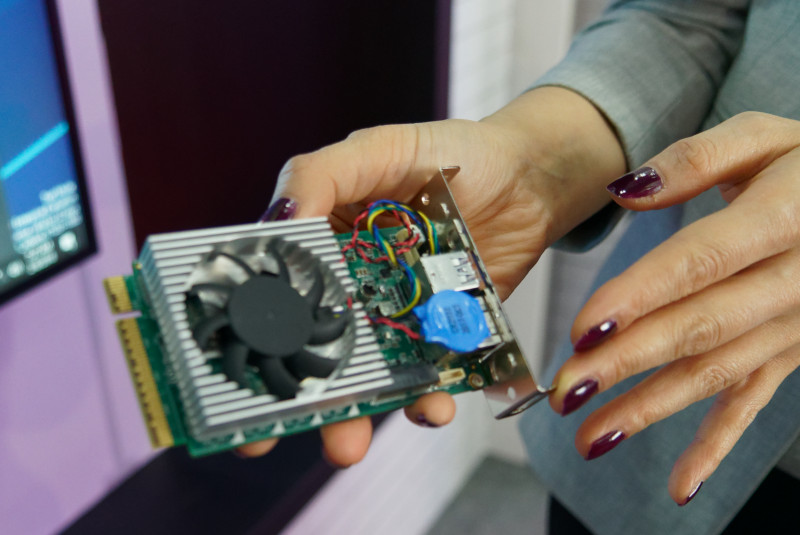
We met with AUO at the show, but the company forgot to tell us that it has recently bought ComQi for up to $28 million. We have heard from those that are closer to the software business that the price paid may have been higher than other bidders (such as Stratacache, which has been acquisitive recently) were prepared to offer. The company sources a range of media players and certifies them for its digital signage software.
(This deal is clearly in line with AUO’s stated plan to be more of a supplier of complete systems, rather than just panels – Man. Ed.).
We heard from component suppliers that Barco had staff discouraging detailed close up inspection of the company’s innovative UniSee video wall technology on its booth. Those companies should have gone to see Comm-Tec, a distributor for the product, which was in Hall 2 and had a system that could be looked at closely in a relaxed manner! We got some good images of the new mounting system used.
The company has also worked with Vogel’s of the Netherlands to develop special brackets to allow connection of the Barco brackets to standard Vogel’s video wall solutions for mounting the panels by hanging from ceilings or by floor mounting or free standing. The free-standing option can support panels up to three LCDs high in landscape mode.
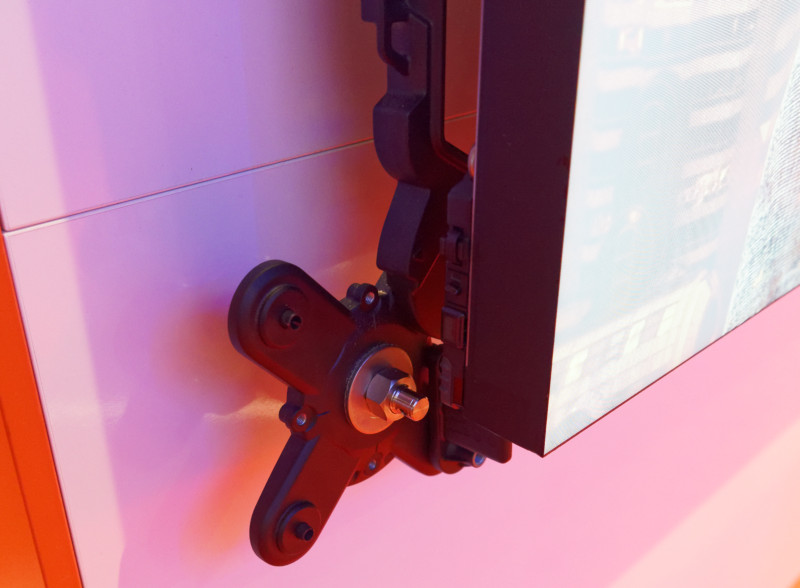 Barco’s Unisee Mechanism was being shown by Comm-Tec which is distributing the display. Image:Meko
Barco’s Unisee Mechanism was being shown by Comm-Tec which is distributing the display. Image:Meko
 Barco’s UniSee display was shown open and highlights the way the displays move away and are held apart against gravity. Image:Meko
Barco’s UniSee display was shown open and highlights the way the displays move away and are held apart against gravity. Image:Meko
Barco also launced the idea of ‘AVaaS’ or AV as a service, under which users can access technology on a monthly subscription basis, rather than having to purchase equipment or installation services. Barco will offer this exclusively through partners and it will initially cover just the weConnect and Overture collaboration products, although if all goes well it will be extended to other areas. (It’s often a good enabler of business growth to help organisations move expenditure from capex to opex budgets – Man. Ed.)
Macroblock was showing its latest drivers and we covered those in our roundup (LED Display Roundup – ISE 2018) , but the company was also showing a new LED display that it has developed using flip chip mini-LEDs with 0.75mm pitch. The company told us that it plans to make LED displays of this type, itself, with resolutions up to ‘4K’, which is quite a change for a company that has, up to now, supplied the vast majority of driving chips to other LED display makers. The company is supplying samples now, and plans mass production in 2018.
We also got this table of the different types of LED that it supports.
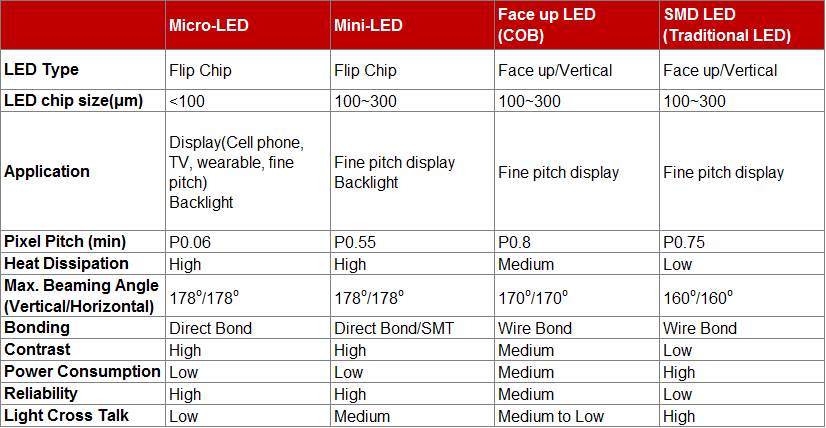
The company also told us that it is supplying its chips in two different packages. Where space is not so important, where cost is the key and in larger pitch displays, it can supply standard chip packages, but the size of the package becomes bigger because of the number of connections around the edge. Where the smallest pitches are used, the company supplies the chips in BGA packages which are just 8mm x 8mm. Cost is higher for this package type.
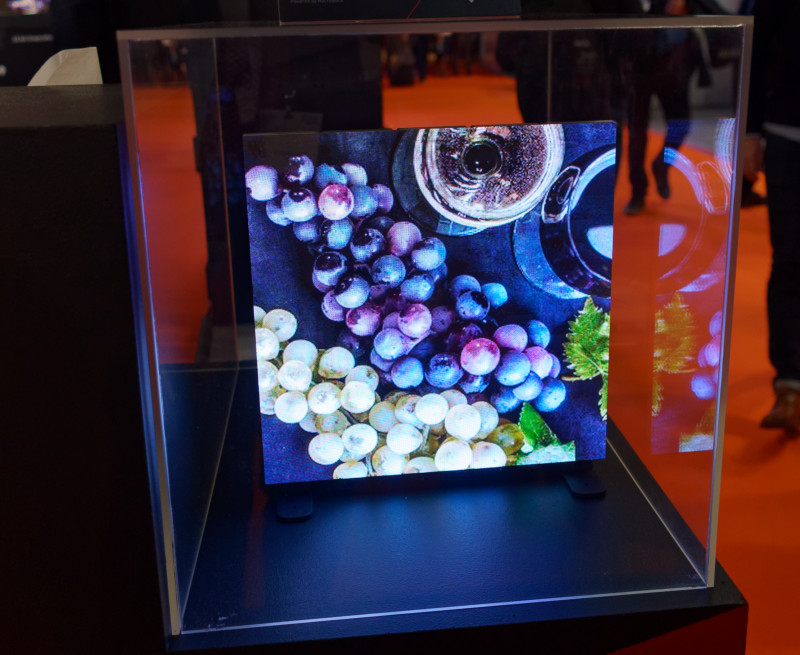
Mon-Lumi is a company that is working on the idea of replacing lumieres with projection devices that can project and react to interaction on table surfaces in restaurants, museums, waiting rooms and hotels. The company has a range of styles and sizes (S, M, L and XL) and can also supply non-interactive displays. We didn’t have time to stop and get details, but you can find more online.
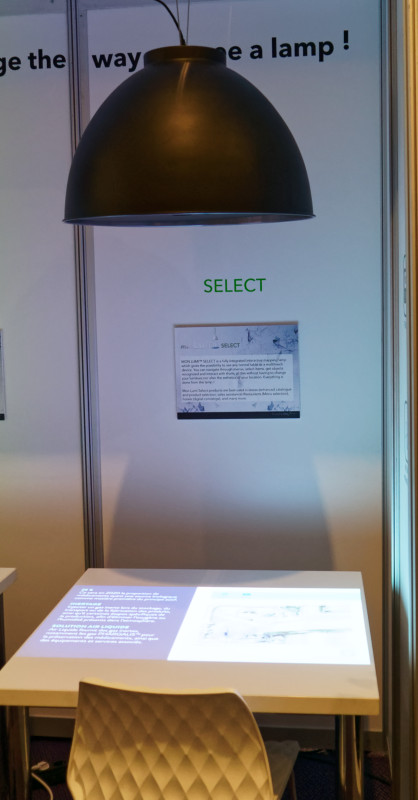 Mon Lumi’s projector is for retail, museums and hotels. Image:Meko
Mon Lumi’s projector is for retail, museums and hotels. Image:Meko
Navori, a well know maker of digital signage software has now developed support for the latest of Samsung’s Tizen Smart Displays, after previously supporting Android-based Large Format Displays (LFDs) from Philips, Panasonic and Elo. The software was shown on the Samsung booth. The company is also planning to support Sharp and BenQ in the future. The company’s latest PC player software will be able to support up to 16 1080p displays with frame-level synchronisation.
We spotted this photo of the Panasonic lens which supports dome display while allowing the projector to be on the edge of the dome, rather than in the middle. (Panasonic Shows New Projectors, LCDs at ISE)
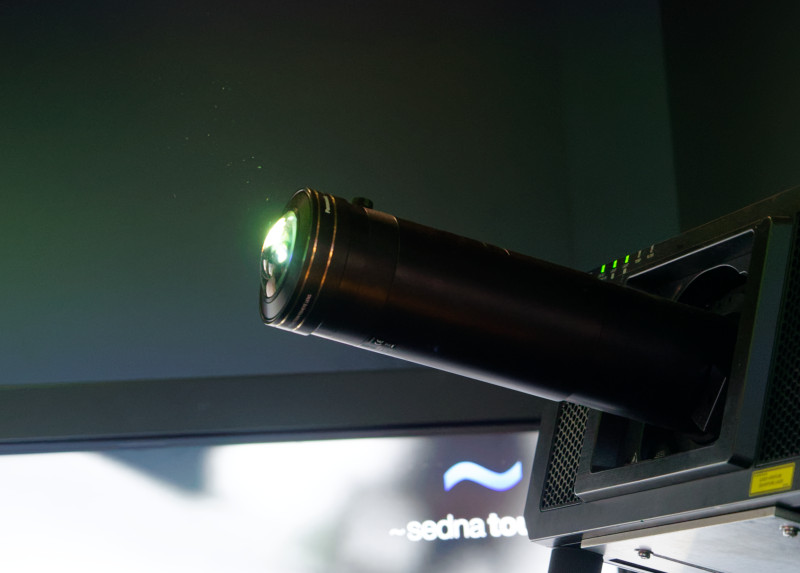 Panasonic’s new Dome Lens – Image:Meko
Panasonic’s new Dome Lens – Image:Meko
Ricoh said at the show that it is working with IBM to develop the use of IBM’s Watson AI technology in meetings and with interactive displays. The companies have been working together on the Cognitive Whiteboards and the company is reported to have installed 80 IWBs at IBM’s Watson facility in Munich, Germany. The system is reported to allow staff in Germany, the US, Japan and Brazil to collaborate, but work in their local languages.
VNS had a new G406 video wall controller that use dual HDMI 2.0 and DisplayPort 1.2 inputs as well as dual HDMI2.0 loopthrough. It also has four synchronised FullHD outputs to allow the display of up to four different sources on 2 x 2 video walls. It can also support irregular and creative video wall arrangements.
 The VNS Controller has a lot of layout options
The VNS Controller has a lot of layout options

